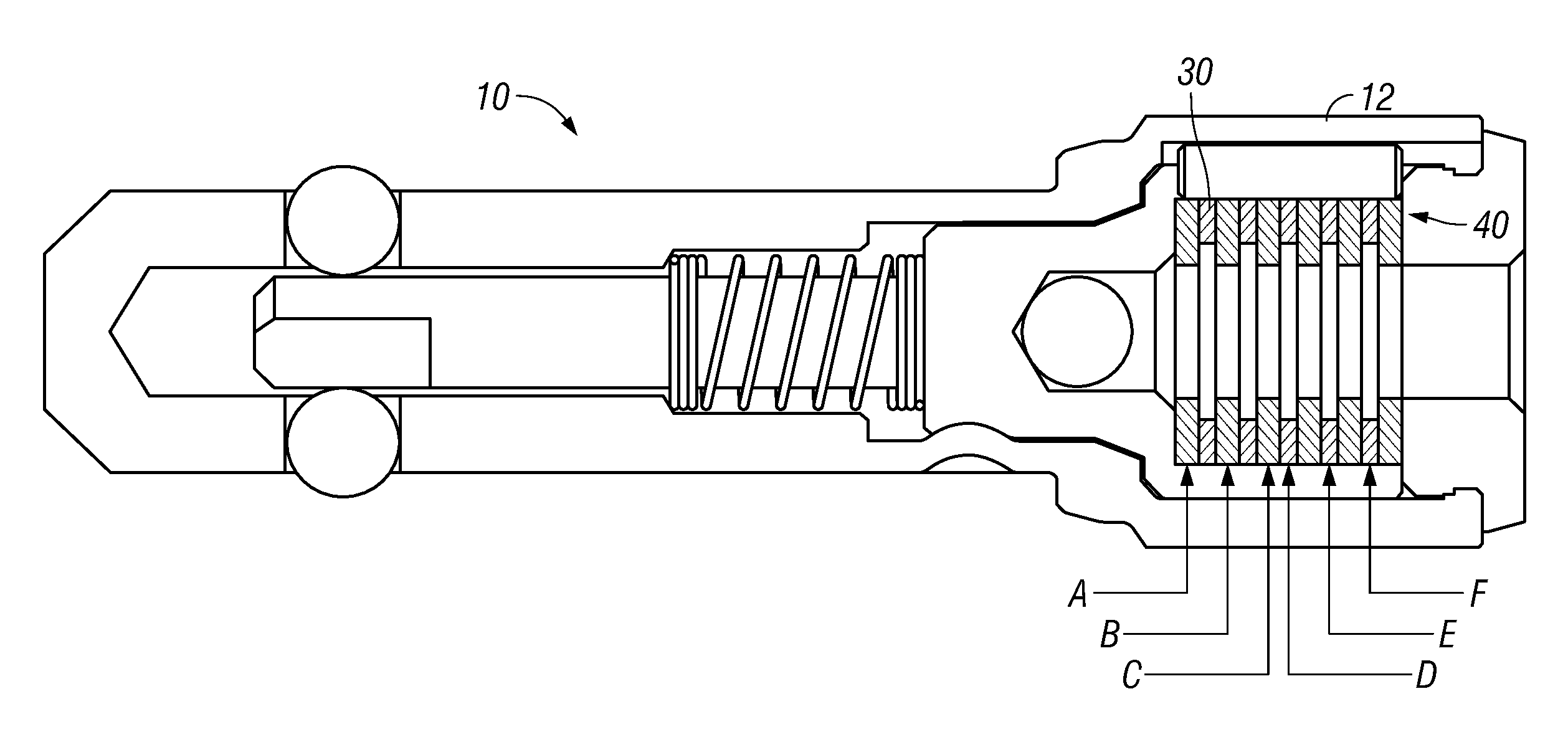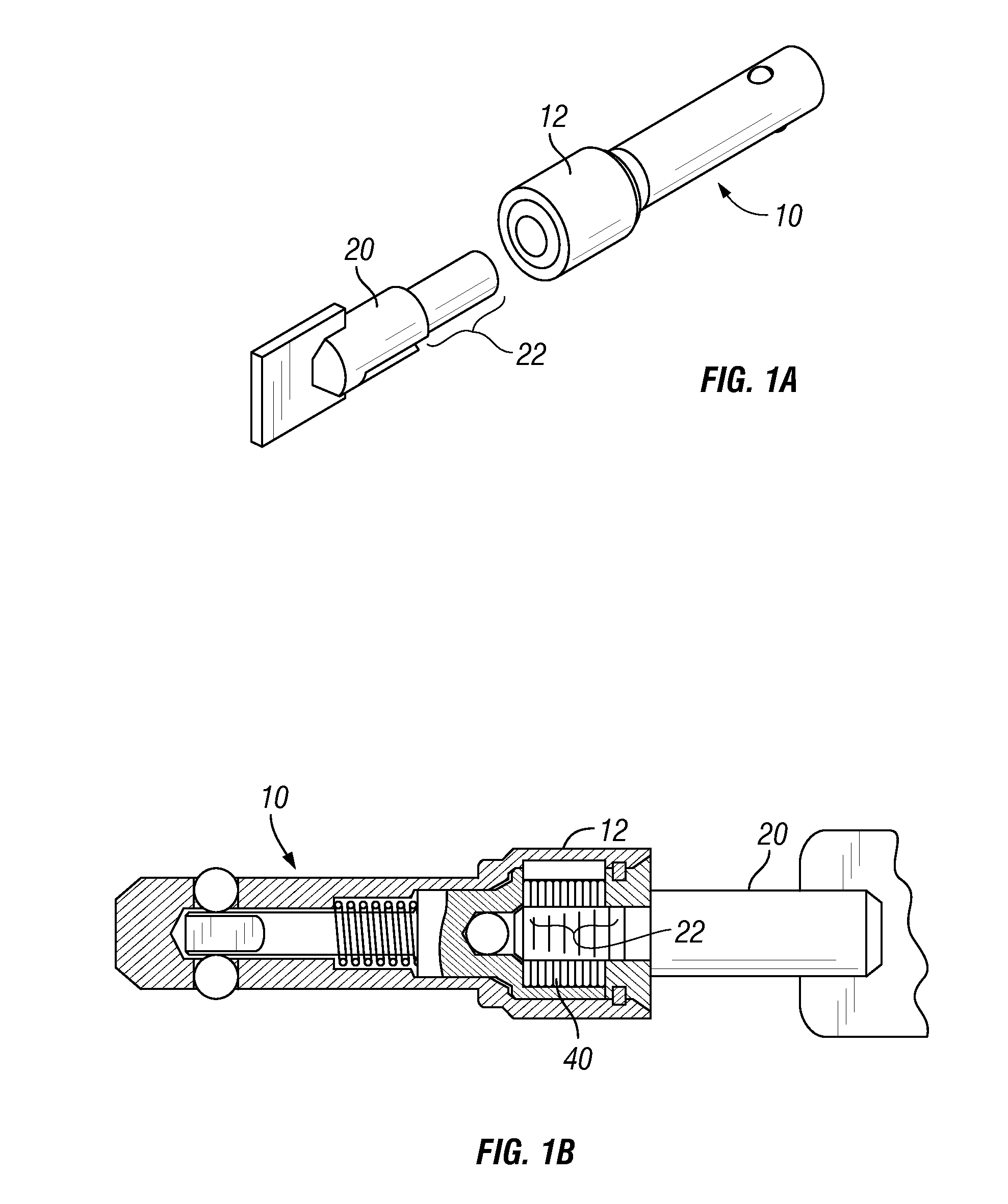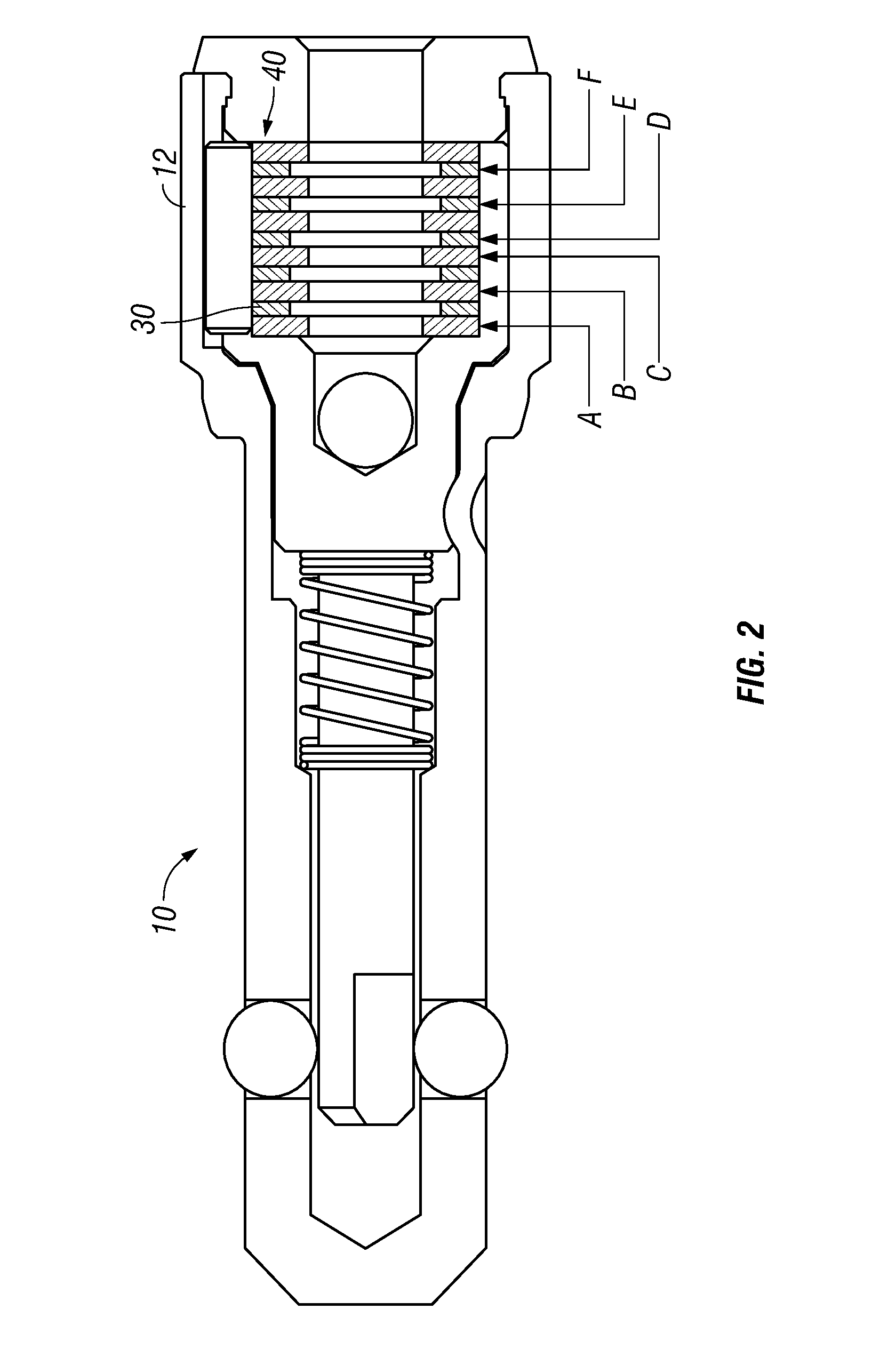Rotating disk lock mechanism
a technology of rotating disks and locking mechanisms, which is applied in padlocks, building locks, constructions, etc., can solve the problems of limited capacity, limited potential combinations, and length of portions, and achieve enhanced potential combinations, enhanced potential combinations, and enhanced potential combinations
- Summary
- Abstract
- Description
- Claims
- Application Information
AI Technical Summary
Benefits of technology
Problems solved by technology
Method used
Image
Examples
Embodiment Construction
[0033]FIGS. 1A-3C depict a known rotating disk barrel lock 10 and known operating key 20. The barrel lock 10 includes a head portion 12 which contains a series of rotatable disks 40 that are arranged in a stacked relationship. Each rotatable disk 40 is spaced apart from adjacent disks by a spacer 30.
[0034]The key 20 include a series of longitudinally spaced “key cuts” referred to herein as cam surface sections 22. The number of cam surface sections 22 corresponds to the number of disks 40 in the lock and each cam surface section engages a separate disk. In particular, each cam surface section 22 engages spiral disk cam surfaces 24 located in a central aperture 60 of each disk thereby rotating the disks to lock or unlock the lock 10 (FIGS. 3A-3C).
[0035]The operation of the lock mechanism is described more fully in U.S. Pat. No. 5,086,631 and U.S. Patent Application Publication No. 2008 / 0105013, which are both incorporated by reference herein.
[0036]Referring now to FIG. 2, the disks 4...
PUM
 Login to View More
Login to View More Abstract
Description
Claims
Application Information
 Login to View More
Login to View More - R&D
- Intellectual Property
- Life Sciences
- Materials
- Tech Scout
- Unparalleled Data Quality
- Higher Quality Content
- 60% Fewer Hallucinations
Browse by: Latest US Patents, China's latest patents, Technical Efficacy Thesaurus, Application Domain, Technology Topic, Popular Technical Reports.
© 2025 PatSnap. All rights reserved.Legal|Privacy policy|Modern Slavery Act Transparency Statement|Sitemap|About US| Contact US: help@patsnap.com



